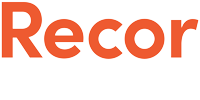Did You Know?
What is a cost-effective analysis and why is it important?
June 26, 2025
Traditionally, there have been two major questions that need to be answered before a healthcare system will enable the adoption of innovative new technologies and therapies:
- is this new technology/procedure safe?
- and, how effective is this technology/procedure?
In a world where healthcare systems are facing financial challenges and restrictions, Payers and Policy makers are increasingly focussed on a third question:
- does adopting this technology represent good value for money?
Cost-effectiveness analysis (CEA) seeks to answer this third question by evaluating the costs and benefits associated with adopting a new technology in terms of an Incremental Cost Effectiveness Ratio (ICER), this ratio describes the incremental costs of adopting the technology per unit of benefit on a universal scale called the Quality Adjusted Life Year (QALY).
Why perform the analysis for the UK, Belgium, France and the Netherlands?
Healthcare systems in Europe operate under the sovereignty of their respective governments, in theory this means they are designed to best meet the needs of their respective populations, in reality we see that clinical pathways and the costs associated with providing care can vary significantly in different countries. In addition, the question of what constitutes good value is specific to each society and healthcare system, In the Netherlands this threshold, known as willingness to pay (WTP), is €20,000 per QALY but in France the willingness to pay is €50,000 per QALY. It is therefore not possible to assume that if a technology or intervention is cost effective in one country, it will automatically be so in another different geography.
The UK healthcare system is particularly mature in considering cost-effectiveness in its adoption of new technologies or therapies, with the internationally recognised body NICE (National Institute for Health and Care Excellence) providing the reference point for acceptable methods of performing CEA. Belgium, France and the Netherlands are also all markets that explicitly consider cost-effectiveness in the developments of their respective healthcare policies, often alongside informing price negotiations. These factors influenced our strategy in specifying our two cost-effectiveness papers.
What do the cost-effectiveness analysis of Ultrasound Renal Denervation (uRDN) show?
The analysis for each country employs the same methodology: an economic model (Markhov model) is built that estimates the projected costs, and quality adjusted life years (QALYs) with the addition of uRDN to standard of care (SoC) compared with SoC alone over a patient`s lifetime. The analyses were based on the RADIANCE-HTN TRIO trial, which demonstrated a mean reduction in office systolic blood pressure from a baseline of 8.5 mmHg at 2 months post-uRDN among patients with resistant hypertension. The model correlates the reduction in blood pressure with a reduction in risk of selected cardiovascular events (End stage renal disease, Heart Failure, MI, Stroke, AP/CHD, Death). In addition to the base case, a number of different scenarios are evaluated in the model to check that the results and conclusions are robust.
In each of the cost-effectiveness analysis performed the incremental cost effectiveness ratio is well within the respective willingness to pay threshold with the authors concluding that the addition of endovascular uRDN offers clinicians and payers a cost-effective adjunctive treatment approach alongside hypertensive medication for the management of resistant hypertension in the healthcare systems of the UK, Belgium, France and the Netherlands.
Author of the article: Sam Carter, Director Market Access EMEA, Recor Medical
Reference:
| 1 | Cost Effectiveness of Endovascular Ultrasound Renal Denervation in Patients with Resistant Hypertension – PubMed; https://pubmed.ncbi.nlm.nih.gov/38289517 |
September 22, 2025
A new clinical trial reveals that something as simple as arm position can skew blood pressure readings by up to 6.5 mm Hg — enough to misdiagnose hypertension or trigger unnecessary treatment. Find out what the study uncovered and why proper technique matters more than ever.
March 11, 2025
Sleep disorders, particularly sleep apnea, pose a significant yet often overlooked threat to cardiovascular health. One of the most concerning impacts is their connection to high blood pressure (hypertension).

